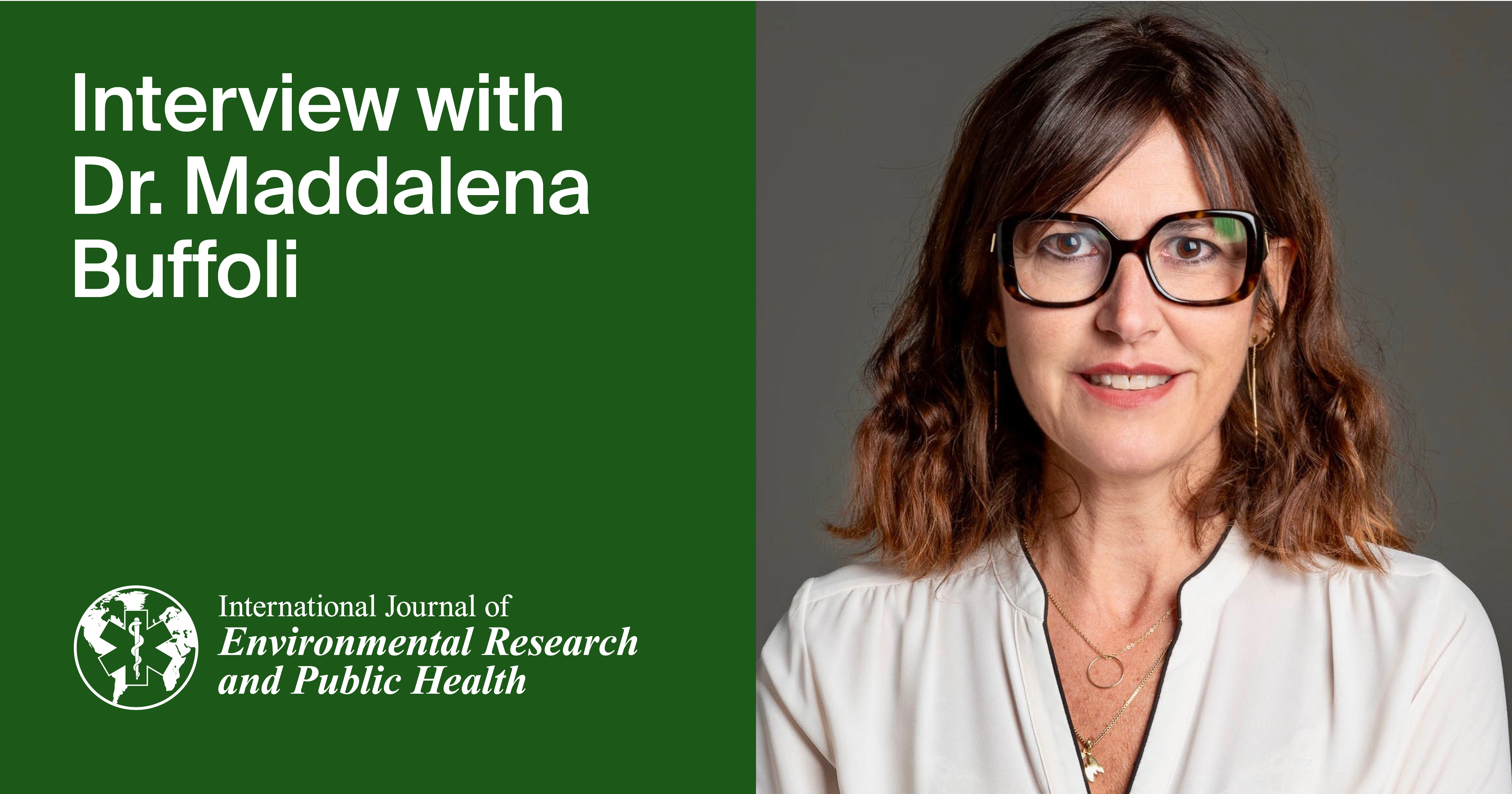
International Journal of Environmental Research and Public Health | An Interview with the Author—Dr. Maddalena Buffoli
Name: Dr. Maddalena Buffoli
Affiliations: Architecture, Built environment and Construction engineering (ABC) - Design & Health Lab., Politecnico di Milano, 20133 Milan, Italy
Research interests: climate change, climate strategies, urban health, health promotion
“Integrated Climate Change Mitigation and Public Health Protection Strategies: The Case of the City of Bologna, Italy”
by Isabella Nuvolari-Duodo, Michele Dolcini, Maddalena Buffoli, Andrea Rebecchi, Giuliano Dall’Ò, Carol Monticelli, Camilla Vertua, Andrea Brambilla and Stefano Capolongo
Int. J. Environ. Res. Public Health 2024, 21(11), 1457; https://doi.org/10.3390/ijerph21111457
Available online: https://www.mdpi.com/1660-4601/21/11/1457
Interview Questions:
1. Could you give us a brief introduction about yourself and your current research topic?
Thank you so much for the interview. I’m Maddalena Buffoli, an Associate Professor at Politecnico di Milano (the Polytechnic University of Milan), where I work in the Design & Health Lab in the Department of Architecture, Built Environment and Construction Engineering (ABC), under the leadership of Prof. Stefano Capolongo. My research focuses on urban health and its intersection with sustainable urban planning and climate change. In this study, we analyzed the policies and strategies adopted by cities like Bologna, one of the 100 cities committed to achieving carbon neutrality by 2030, to mitigate climate change and its impact on environmental and public health. Bologna is one of the first cities in Italy to submit its goal to achieve carbon neutrality by 2030. Just to add, Bologna was also one of the first to submit its climate change contract, and it’s one of the first cities to submit its Climate City Contract, a strategic document outlining actions and investments to reach this goal.
This is one of the reasons we chose Bologna for our study. The study highlights methods for evaluating municipal policies that simultaneously promote environmental sustainability and public health, in line with the Healthy Cities approach, which is very important for us.
2. Could you describe the difficulties and breakthrough innovations in this research field?
One of the main challenges in the Urban Health field is integrating health considerations into urban policies and climate strategies. It’s clear that climate change strategies and urban policies have significant impacts on public health, but there isn’t a clear framework to connect them. Most cities lack an integrated framework to evaluate the dual impact of these policies. Our study addresses this gap by providing a systematic method for mapping and analyzing urban planning documents to identify measures that address greenhouse gas emissions while promoting health. This methodology offers a replicable approach for other cities. It is a global issue. We are used to working in multidisciplinary teams, which is essential to tackle these challenges.
3. What motivated you to conduct this research?
My motivation comes from the growing need to address the interconnected challenges of climate change and public health in urban areas. Cities are significant sources of greenhouse gas emissions, but at the same time, they are home to various health risks, such as non-communicable diseases, and we need to use a synergistic multidisciplinary approach to make them healthier and more resilient. By 2050, 70% of the global population will live in urban areas, as noted in a Lancet article. This underscores the importance of creating healthier, more sustainable cities that protect and promote the health of their current and future residents.
Speaking specifically about Italy, Italy has a high population density, and we have 14 metropolitan cities and over 40 medium-sized cities, many of which are very close to one another, making it easier for people to move between them for working or living. In Italy, most people live in cities, but after COVID-19, they prefer to live in medium-sized cities, with populations of around 100–200,000, because the quality of life is more accessible and more affordable compared to large cities like Milan, Naples, or Rome. Rural areas and the countryside have fewer residents, and the population density is much lower, and the population is decreasing. People are moving to the cities, particularly the medium-sized ones. The key motivation for this migration is better access to health services, education, and job opportunities. That is why we need to build a new concept of cities that are both healthier and more sustainable for all.
4. How do you evaluate research trends in your field, and what are your suggestions for young scholars?
My advice to scholars is to adopt integrated methodologies that evaluate both environmental and health impacts, as we've done in our studies. I believe this is one of the key goals for the future of this research field. Multidisciplinary collaboration between urban planners, policymakers, and public health experts will be crucial in driving meaningful change.
5. How was your publishing experience with IJERPH?
I became familiar with IJERPH due to its excellent reputation, particularly for publishing high-quality, interdisciplinary research. As I mentioned before, the interdisciplinary approach is crucial to us, and we value that the journal has an international readership. This visibility is important for us, as we want our research to reach a global audience.